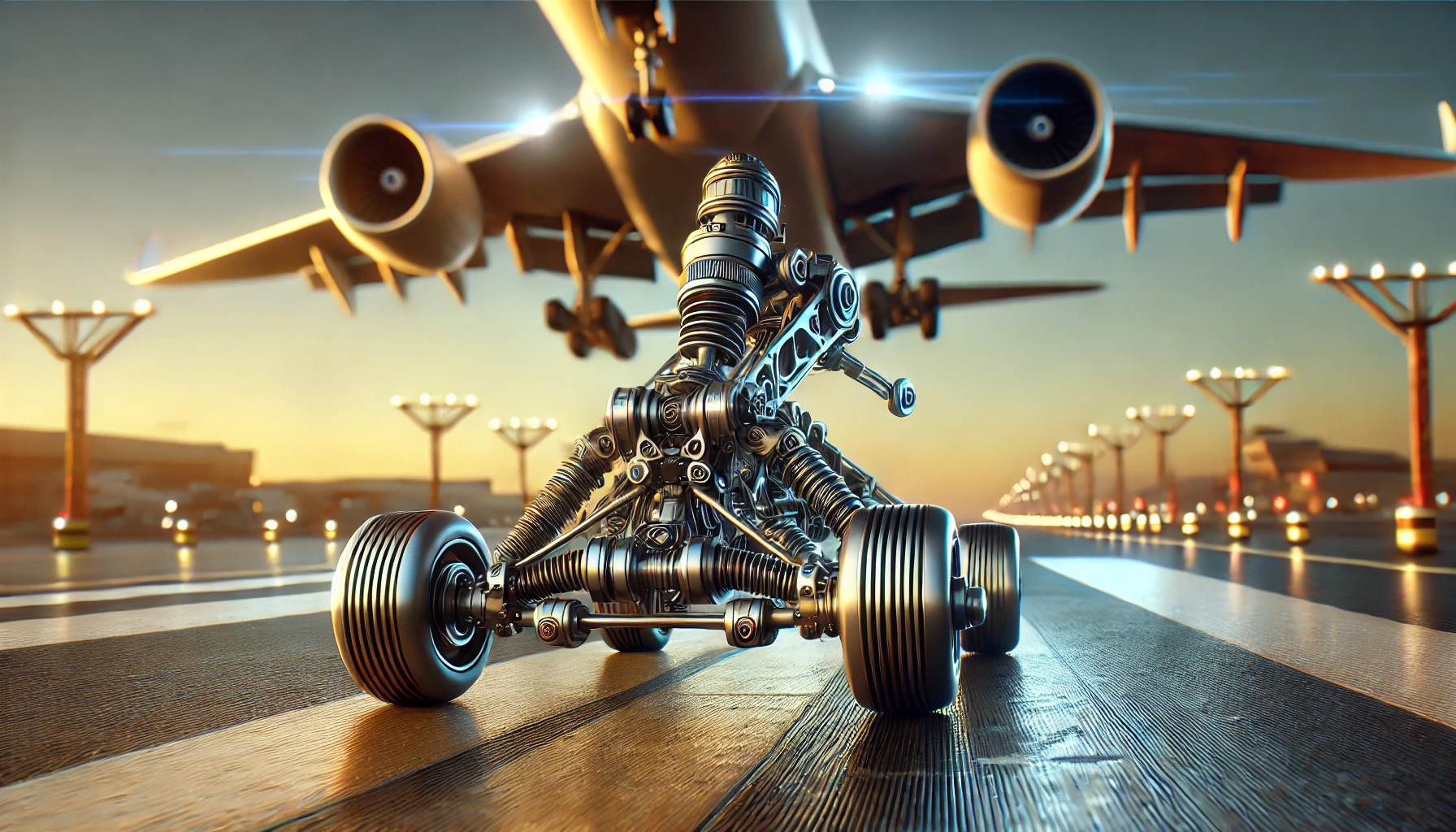When you think of a plane gracefully touching down on the runway, your mind might conjure images of soaring heights and breathtaking views. But behind that seamless descent lies a remarkable feat of engineering—landing gear! Often taken for granted, this crucial component is the unsung hero of aviation safety, ensuring that every landing is as smooth as silk.
In this blog post, we’ll take you on an exciting journey through the mechanics of landing gear, exploring how it absorbs impact, stabilizes aircraft during touchdown, and plays a pivotal role in bringing travelers back to solid ground safely.
Buckle up as we dive into the fascinating world where physics meets precision engineering—a place where wheels meet runways in perfect harmony!
Introduction to Landing Gear
When you think of flying, your mind might drift to the thrill of soaring through the clouds or the breathtaking views from above. But behind those smooth takeoffs and landings lies an unsung hero: landing gear. This vital component is often overlooked, yet it plays a crucial role in ensuring aircraft can touch down safely and securely. Whether you’re a seasoned aviator or just curious about how planes operate, understanding landing gear can add depth to your appreciation for aviation.
Imagine feeling the rush as wheels meet runway during descent—a moment where engineering brilliance meets sheer artistry. Join us on this journey as we dive into the fascinating world of landing gear, exploring its components, mechanics, and advancements that keep our flights safe every day. Buckle up; it’s time to explore what makes those smooth landings possible!
Components of Landing Gear
Landing gear is a complex system designed for stability and safety. At its core, it includes the main gear and nose gear, which support the aircraft during takeoff, landing, and taxiing.
Shock absorbers play a crucial role in this assembly. They absorb the impact of landing forces to ensure a smooth transition from flight to ground.
Wheels are another vital component. These are engineered to handle immense weight while providing traction on various surfaces.
Braking systems enhance control during landings. They reduce speed effectively once contact with the runway occurs.
Finally, struts connect these components, providing structural integrity. Their design allows for movement while maintaining strength against load changes during different phases of flight.
Each part works in harmony to facilitate safe landings and takeoffs, making them essential for every aircraft’s performance.
Types of Landing Gear (Fixed vs. Retractable)
Landing gear comes in two primary types: fixed and retractable. Each serves a unique purpose, influencing aircraft design and performance.
Fixed landing gear is permanently attached to the airframe. This setup is straightforward and cost-effective. It provides robust support during takeoff and landing while maintaining simplicity in maintenance. However, it can create drag, which may affect fuel efficiency.
Retractable landing gear offers a different approach. These systems tuck away into the fuselage during flight, minimizing aerodynamic drag. The streamlined design often leads to better fuel economy and improved speed capabilities. However, this complexity requires additional mechanisms that need regular checks for proper function.
Choosing between fixed or retractable depends on various factors like aircraft type, mission profile, and desired performance characteristics. Each option has its advantages tailored to specific aviation needs.
The Mechanics Behind Smooth Landings
Smooth landings are a blend of science and skill. At the heart of this process is landing gear, which absorbs impact during touchdown.
When an aircraft approaches the runway, pilots carefully manage speed and angle. The landing gear’s shock absorbers play a crucial role here, cushioning the force that occurs upon contact with the ground.
The alignment of wheels also matters. Properly aligned landing gear ensures even weight distribution, minimizing stress on tires and structural components.
Once grounded, dynamic braking systems engage to slow down safely. This transition from flight to taxiing requires seamless coordination between various systems to maintain control.
Ultimately, smooth landings hinge not just on pilot expertise but also on well-designed landing gear that can withstand forces while providing stability throughout the descent.

Factors Affecting Landing Gear’s Performance
Several factors can significantly influence the performance of landing gear. One critical aspect is the aircraft’s weight. Heavier planes exert more pressure on landing gear, impacting its efficiency and durability.
Weather conditions also play a crucial role. Rain, snow, or ice can create slippery runways, making it difficult for landing gear to provide adequate traction during touchdown.
The design and materials used in constructing the landing gear affect its resilience too. Advanced alloys may enhance strength while reducing weight, leading to better performance.
Maintenance practices cannot be overlooked either. Regular inspections help identify wear and tear before they escalate into serious issues.
Lastly, pilot technique matters greatly. A smooth approach and proper speed management contribute directly to how well the landing gear performs upon contact with the ground. Each of these elements intertwines to ensure successful landings time after time.
Common Issues and Maintenance of Landing Gear
Landing gear is crucial for safe landings, yet it often encounters issues that can compromise performance. Common problems include wear and tear on tires, hydraulic leaks, and malfunctions in the retraction mechanism. Each of these can lead to serious safety concerns if not addressed promptly.
Regular maintenance is essential to keep landing gear functioning smoothly. Inspections should be routine, focusing on tire condition, brake systems, and hydraulic components. Any signs of corrosion or damage must be reported immediately.
Lubrication plays a vital role too. Properly lubricated joints and struts reduce friction and extend the lifespan of landing gear parts.
Technicians should also pay attention to the alignment of wheels during maintenance checks; misalignment can affect stability during takeoff and landing phases.
By prioritizing upkeep and addressing common issues proactively, aircraft operators ensure safer flights for everyone onboard.
Modern Advancements in Landing Gear Technology
Recent innovations in landing gear technology have transformed aviation safety and efficiency. Engineers now focus on lighter materials, like carbon fiber composites, which reduce overall aircraft weight while maintaining strength.
Advanced shock absorption systems are also emerging. These systems use smart materials that adapt to various runway conditions, enhancing the comfort of passengers during landings.
Another exciting development is the integration of sensors into landing gear assemblies. These sensors provide real-time data on structural health and performance metrics. This information helps pilots make informed decisions during critical phases of flight.
Moreover, automation plays a crucial role in modern designs. Some aircraft utilize automated systems for landing gear deployment and retraction, improving reliability and precision.
As airlines continue to prioritize sustainability, new technologies aim to minimize noise pollution during landings as well. Innovative designs help create quieter operations without sacrificing performance or safety standards.
Conclusion: The Importance of Properly Functioning Landing Gear
The importance of properly functioning landing gear cannot be overstated. This crucial component is the backbone of every aircraft’s landing and takeoff process. When landing gear operates smoothly, it ensures not only a safe touchdown but also enhances overall flight safety. Any malfunction or failure can lead to disastrous consequences.
Regular maintenance and inspections are essential in keeping landing gear in optimal condition. Pilots and ground crews must be vigilant about any signs of wear or damage. Neglecting these components could result in compromised performance during critical moments.
As technology continues to advance, innovations in landing gear design promise improved reliability and efficiency. However, the fundamental principles remain steadfast: robust construction coupled with meticulous upkeep leads to successful landings every time.
Understanding how landing gear works helps everyone appreciate its role in aviation safety. Whether you’re an enthusiast or simply curious about aircraft mechanics, grasping this vital aspect fosters a deeper respect for air travel as a whole.




